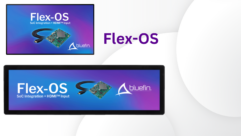Digital Signage Helps “Sell” Mission, Services
Aug 3, 2006 8:00 AM
Digital signage seems to be one of the fastest growing applications of both networked AV and large-screen display, with signage networks proliferating in retail, cinema, education, transportation, and a multitude of other settings. It’s only logical to expect churches to get in on the action, considering worship has long been one of the healthiest AV markets.
Indeed, churches are adopting digital signage quickly and creatively. “Digital signage has been popular in churches for years,” says Lisa Jachimowicz, who runs Digital Signage Forum. One sign of this trend, she adds, is the types of questions turning up on the online forums.
“In the past few years, projectors have been used, but now a new breed of flatscreen questions are coming into play,” she says. “People are inquiring more and more about plasma and LCD screens, but the primary focus now isn’t the typical ‘should I use plasma screens, LCDs, or projectors?’ but seems to be the best brightness, resolution, and quality.”
Of course, churches aren’t necessarily using their digital signs to boost sales, although often the display content includes information about what’s new or on special in the church bookstore. Rather, signs are installed throughout a multi-facility church campus to help visitors find specific rooms, support distributed worship, announce upcoming events, and the like.
A recent example is the Hope Gospel Mission in Eau Claire, Wis., where StrandVision recently installed digital signage in the mission’s Bargain Center. The sign may be in a retail setting, but it’s not a mainstream store. Rather than promoting sales, the messaging helps educate visitors about the mission, its objectives, and its programs.
“Many who visit the center don’t realize that its purpose is to support our residents and our life skills training programs,” says Craig Pederson, business manager at the mission. [The digital in-store advertising] lets people know why we are here.”
The sign displays text slides and images describing the mission’s services, as well as job postings and other information. It replaces a PowerPoint loop that requires frequent maintenance. The StrandVision sign can be updated and maintained through a web interface and receives its content over the Internet. Future plans include upgraded audio and video capabilities.
It has also alerted StrandVision to a potentially important new business niche. “Churches have a lot of interesting uses that are very different from the commercial enterprises we typically work with,” says founder Mike Strand. “They are not directly selling. They are actually investing their digital signage dollars into communication for member retention and growth.”
“This is an exciting new use for StrandVision technology,” Strand says of the Hope Gospel Mission application. “Our system can easily be used to help churches publicize their missions, community services, and news. It’s also an effective way to instantly announce time-sensitive information.”
Jachimowicz also sees digital signage applications growing along with the ever-broader roles churches are taking on these days. “Churches are not just churches any more,” she says. “Many have cafes, daycare centers, schools, business networking programs. Having the latest technological advances sometimes means attracting new church members and being like the church down the street, which has a major sound and video system.”










